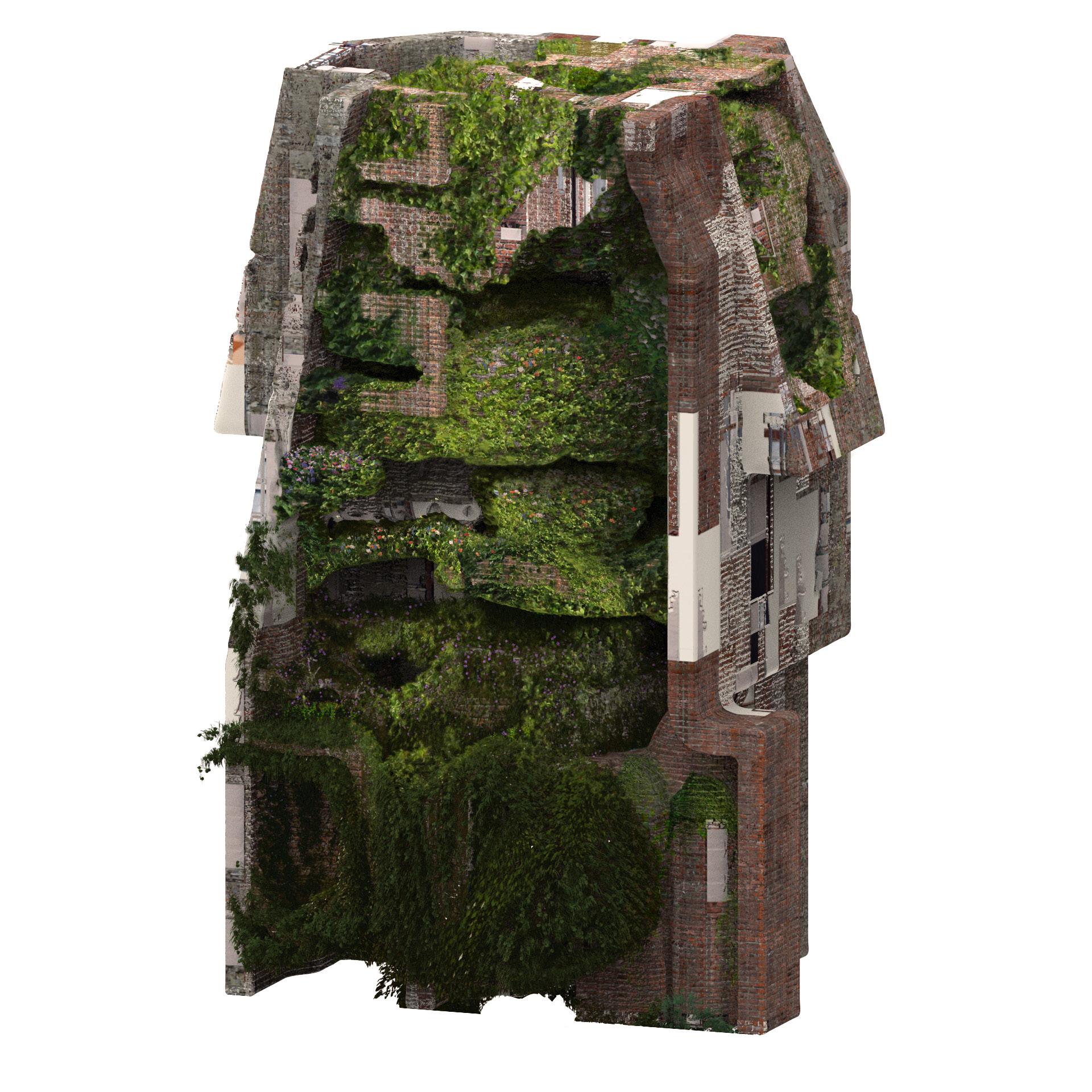
1 minute read
WITHIN THE SCAPE
Both the unfamiliar vegetation and the lack of organic matter on machine parts, detail different outcomes of attempts to control nature. The first fights back against the imposed control to self-organize, and the second is so overly controlled that nature ceases to exist in that biome. The transitions between each microbiome and the variety of growth that occurs outline the shift from an anthropocentric focus, with heavy inorganic machinery, to a biochemical active surface, with self-organizing organic matter. The object relates to its external context and is surrounded by a desolate environment with some semblance of vegetation. The lack of picturesque growth emphasizes the human desire to display their romanticized view of nature. The relationship between figure and ground is reiterated in the interior by posing the question:
what constitutes a landscape?
Advertisement
Landscapes are normally thought of as being a horizontal plane with a variety of vegetation operating as an ecosystem. Since our object’s form is ambiguous from the ground, the figure itself can be perceived as ground, and the vertical growth and natural wilds that self-organize throughout the interior could be considered a landscape. The multitude of microbiomes each constitute a part of the interior and the ecology of parts, interrelated to one another, produce an ecosystem. In deterritorializing the human influence, orthogonal elements and organization are decontextualized and rearticulated as the basis for the organic matter’s self-organization. The transition from picturesque growth to unfamiliar nature to pristine machinery is generated from over-imposed human control. The variety of vegetation is the subsequent response from nature, with self-organization produced from natural wilds.







